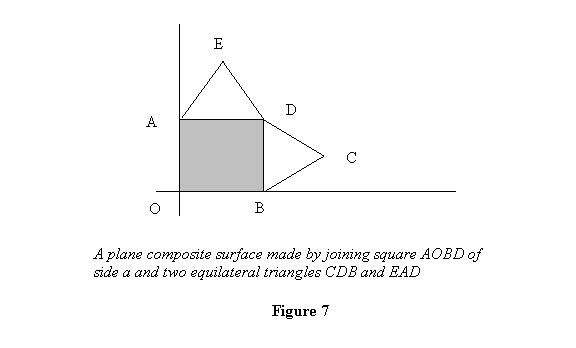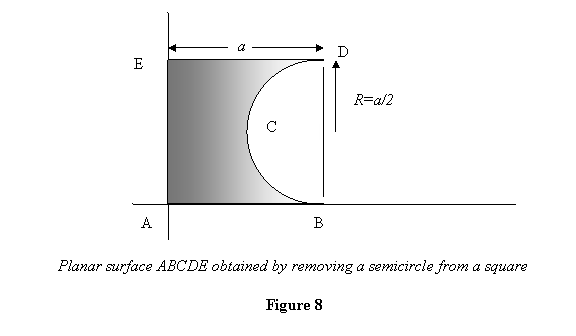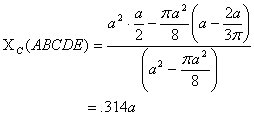Now let us make one observation: If a body is made up
of different shapes of surfaces whose centroid are known.
Than the centroid of the composite body

where XCi are the centroid of different surfaces
and Ai their area. I will leave the simple
proof for you, but solve a couple of examples to show
you how to use this observation.
Example1: Let us take a square of side a and
on its two sides let there be two equilateral triangle
stuck on it (see figure 7). We wish to calculate the
centroid for this surface.

We will consider this body as composed of the square AOBD,
the triangle CDE on its right CDE and triangle EAD on
its top. Then for the square we have

For the triangle on the right of the square

And for the triangle on top of the square
 .
.
Thus for the entire plane we get

Similarly

So because of the triangles, the centroid
shift a bit to the right and a bit up with respect to
the centroid of the square; this happens because of the
added area of the triangles.
Example 2: As the second example, let
us take an area (ABCDE) that has been obtained by removing
a semicircular area from a square. We wish to find its
centroid.

We know the position of the centroid of the square and
the semicircular area. Thus

Therefore

From the previous calculation, we know that the centroid
for semicircle is

from the base. So In the present case we have

The centroid of the figure ABCDE is then

which is a little more than 0.25a . If we had
removed a rectangular area equal to half the square,
the X C for the area left would have been at 0.25a ;
because of the extra area to the right of this point
when the semicircle is removed, the centroid shifts slightly
to the right.
After introducing you to the mathematical
concepts of the first moment and centroid of a surface
area, we now apply these ideas to problems in mechanics.